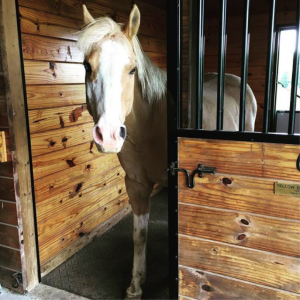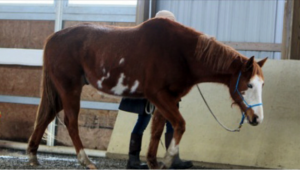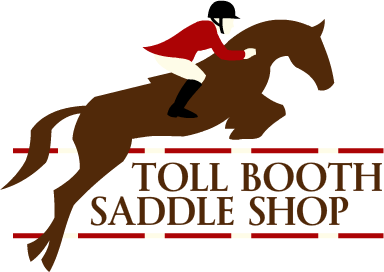Groundwork that Transfers to Riding.
By – Mary Ann Brewer
When you think of groundwork, what are you actually doing? Maybe lunging or round penning, maybe cross tying? These are all potentially helpful skills to teach your horse but do they help you in your riding?
Here are two tips to transfer your groundwork into riding and to create a horse who is as light as a want to!
Tip one:
When you interact with your horse on the ground, do it from the riding area. This will create a habit for your horse of listening to you from behind him (behind his head and neck.) He will learn to think back to you on the ground so you’ll have a more attentive and connected horse when you ride without the use of bits or tie downs. For more on helping your horse to follow your intention see the blog post called “Horses Push”
Horses tend to put their human’s in front of them. This way, the prey animal can keep an eye on their predators! It takes a certain amount of trust to give over leadership. In a natural herd of horses, the leader does not necessarily go first. If you find it hard to get back to the riding area and send your horse forward see the blog post called “Horses Push.”
You’ll want to be able to lead your horse from the riding area on both the right and left side of your horse. This is because you ride both sides of your horse and you want them to be mentally as well as physically balanced.
Tip two:
Keep slack in your lead rope. The way you do this is by creating consistent dialog through your attention to detail and your mental pictures. Your horse will need to participate here. Give him the responsibility of keeping the slack in the lead rope.
Here are some examples of how to hold your horse to account for keeping slack in his lead rope.
- Begin by not using cross ties but give your horse responsibility by ground tying in the barn aisle. Put your halter and lead rope on as usual and drop the lead rope on the floor and say, in words and body language, stay. I use wait. The word doesn’t matter as much as the consistency. Pick a word and use it consistently and it only means stand still right there. If he steps on his lead rope, stay calm and let him get off of it, it is his responsibility to keep slack in the lead rope.
This person took the idea of giving her horse the responsibility of maintaining gait and direction by asking him to stay in his stall and wait for her while she retrieves her saddle from the tack room across the aisle. This was a process that started with a halter and lead rope, a commitment to communication and attention to putting him back every time he came out of his stall. This is a whole horse approach to horsemanship.

- When you are walking, have a lead rope that is long enough for your horse to be able to keep slack in the lead rope and not step on it or you.
If your horse is not used to keeping the slack in the lead rope, he may think the slack means he should take up the slack and go out to the end of the rope and maybe move in circles around you. This is not his fault, he has been taught this way of moving together. Change can be challenging for people and horses so be patient. To fix this, walk alongside of a fence or object that your horse will not step on or run over. If you feel like you are not safe, bring a stick of some sort so you can claim the space around you that you need to keep yourself safe. Be clear and committed to your projected path and your horse will see it. This person is doing a nice job of keeping slack in the lead rope, walking in the riding area and using the big solid wall to support her idea. This horse is calm, connected and doing the exact right thing. When your horse is accustomed to being responsible for his own path and not stepping on yours, you will be able to walk all over without your horse taking the slack out of the lead rope or stepping in your space. This is work that transfers directly to riding.
This person is doing a nice job of keeping slack in the lead rope, walking in the riding area and using the big solid wall to support her idea. This horse is calm, connected and doing the exact right thing. When your horse is accustomed to being responsible for his own path and not stepping on yours, you will be able to walk all over without your horse taking the slack out of the lead rope or stepping in your space. This is work that transfers directly to riding.
Ultimately the goal is to give your horse responsibilities, to think about what we want and contribute to the relationship instead of just being controlled and managed. In this frame of mind, a higher mental state, it is the relationship that we ride and the relationship that keeps everyone safe. I like to call this a two way street of communication instead of a one way road. This is not about making him do it or showing him who is boss. This is about educating your horse to always be in communication. It’s about creating an environment of cooperation and collaboration where both horse and human give their best to the relationship.
Taking it to riding
The key here is to bring the same exact thinking and physical strategies and discoveries to your riding. This can be hard (without support) because we (horses and humans) have habitual ways of riding that we don’t even know about. You need to bring the same slack to your reins that you found in your lead rope. You will need to allow your horse to take the responsibility of maintaining gait and direction only now, you will be on top of your horse touching him. Just like the photos above, you’ll offer your horse exactly what you want and keep clarifying until he completely understands. You’ll do this with kindness as if you were helping a small child to learn or someone from a foreign land.Your clear picture with body language that matches will be important. For example, if you want your horse to walk on a loose rein, you have to put the slack in the rein, release your breathe, sit deep and have a walk energy in your body. If, you are used to using your reins to maintain gait, this might be challenging. To troubleshoot this challenge, get off of your horse, go back to the ground and isolate how you maintain the walk with slack in the lead rope. Then go back to riding and do the exact same thing. I’v explained this is a video here to help you further. It’s called the “Magical Problem Solving Formula!”
Enjoy the journey! If I can help, reach out here!
- When you are walking, have a lead rope that is long enough for your horse to be able to keep slack in the lead rope and not step on it or you.


Recent Comments